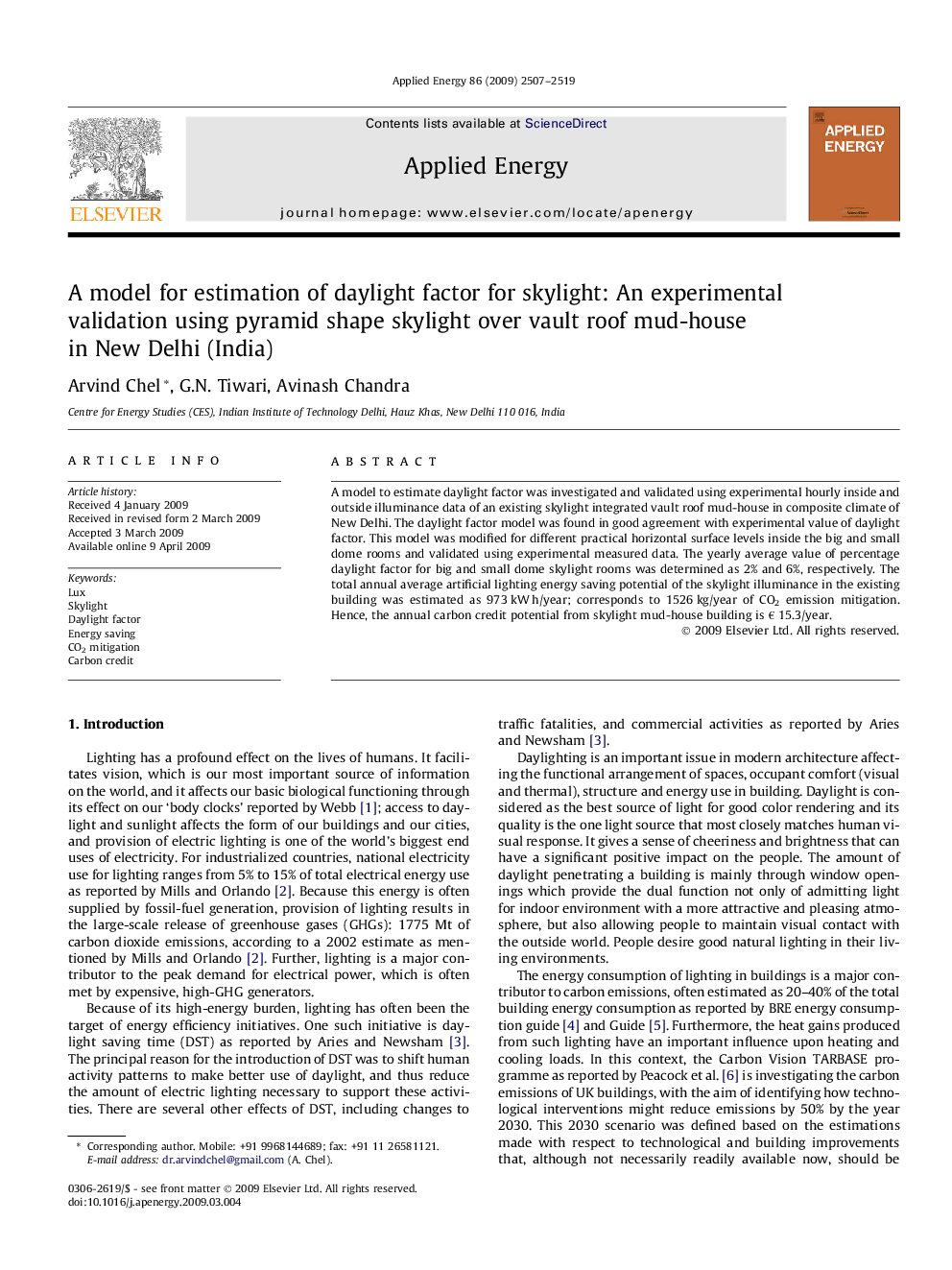| Article ID | Journal | Published Year | Pages | File Type |
|---|---|---|---|---|
| 245101 | Applied Energy | 2009 | 13 Pages |
A model to estimate daylight factor was investigated and validated using experimental hourly inside and outside illuminance data of an existing skylight integrated vault roof mud-house in composite climate of New Delhi. The daylight factor model was found in good agreement with experimental value of daylight factor. This model was modified for different practical horizontal surface levels inside the big and small dome rooms and validated using experimental measured data. The yearly average value of percentage daylight factor for big and small dome skylight rooms was determined as 2% and 6%, respectively. The total annual average artificial lighting energy saving potential of the skylight illuminance in the existing building was estimated as 973 kW h/year; corresponds to 1526 kg/year of CO2 emission mitigation. Hence, the annual carbon credit potential from skylight mud-house building is € 15.3/year.
